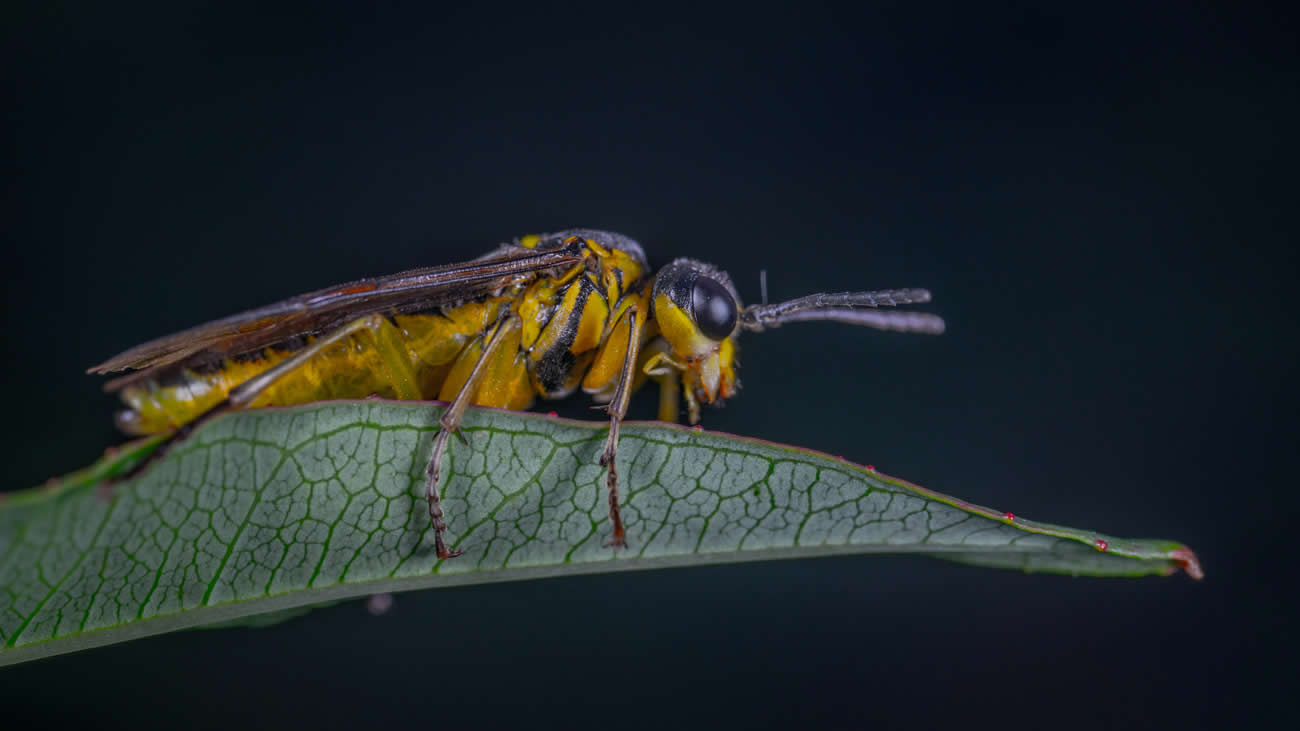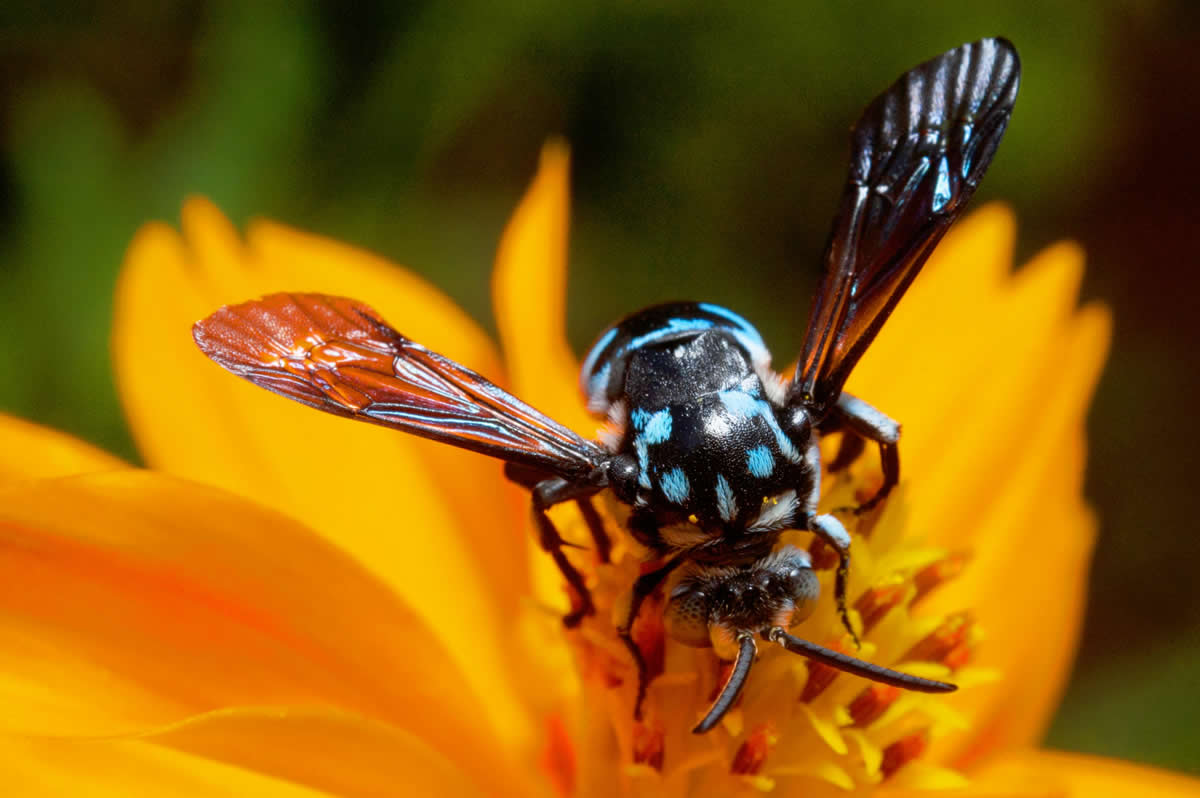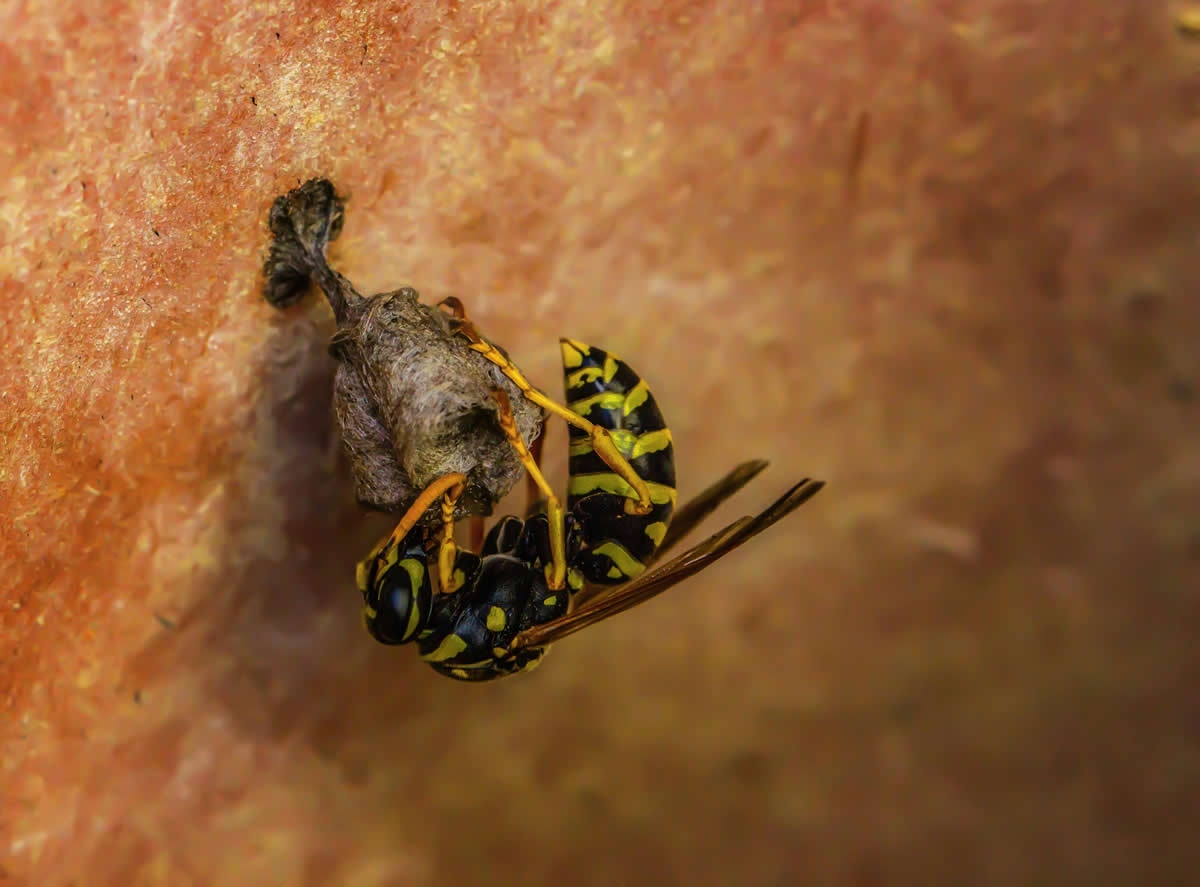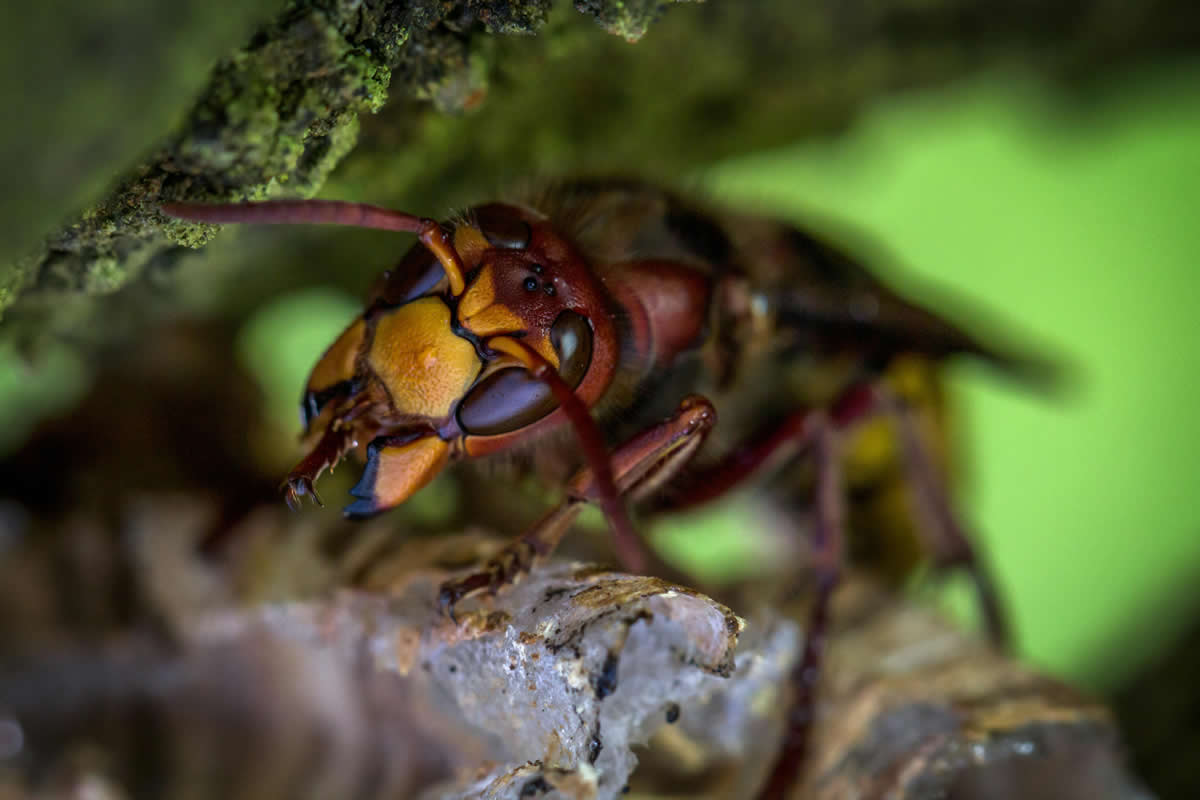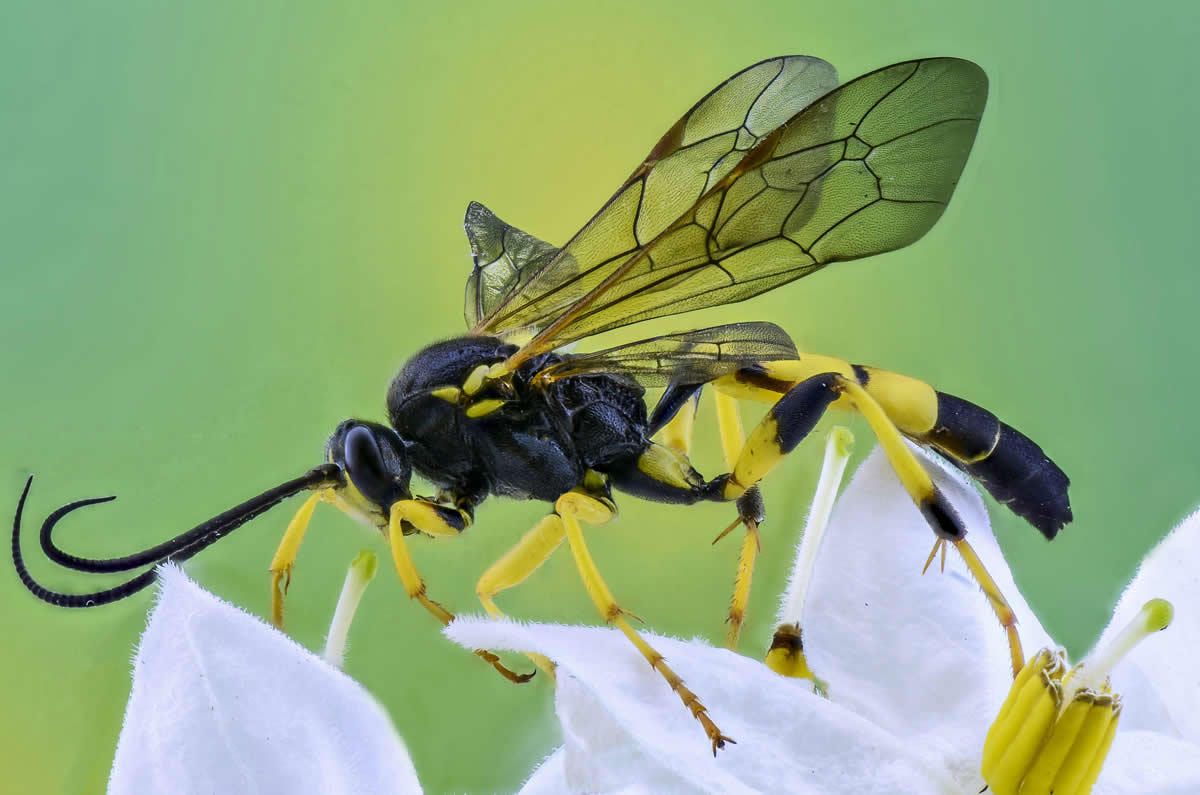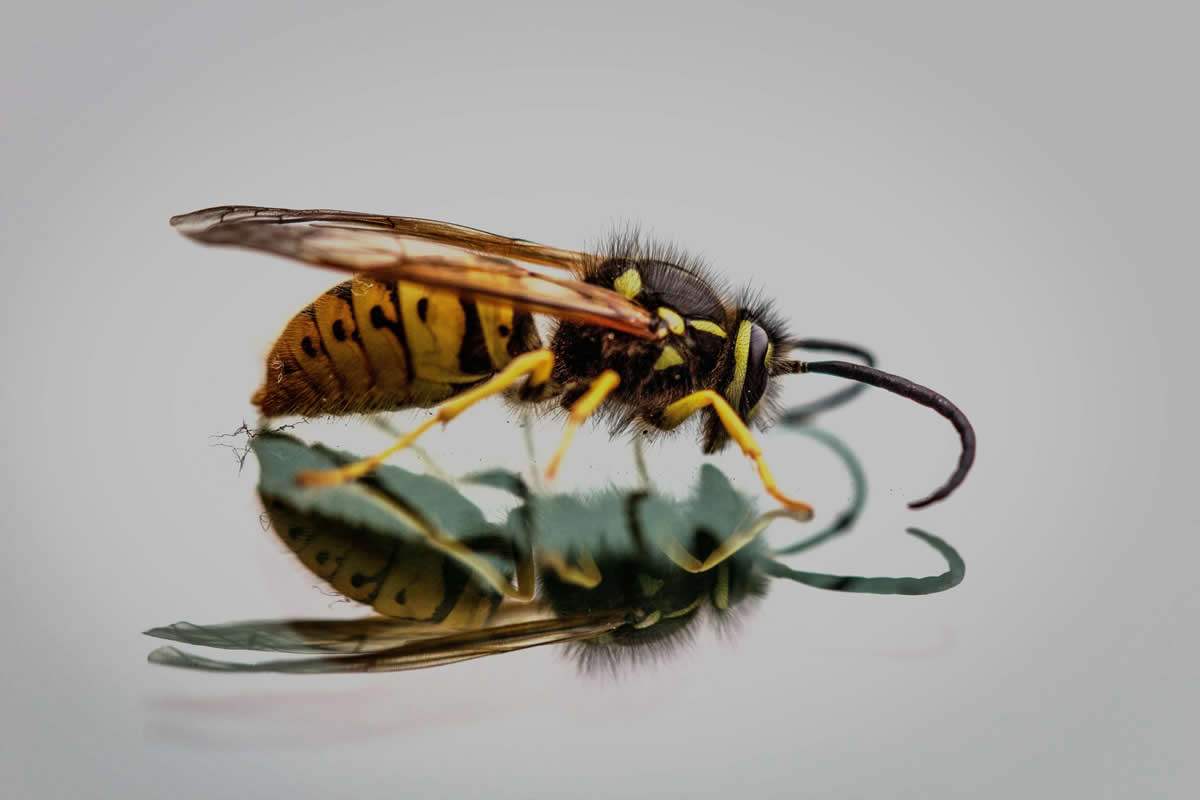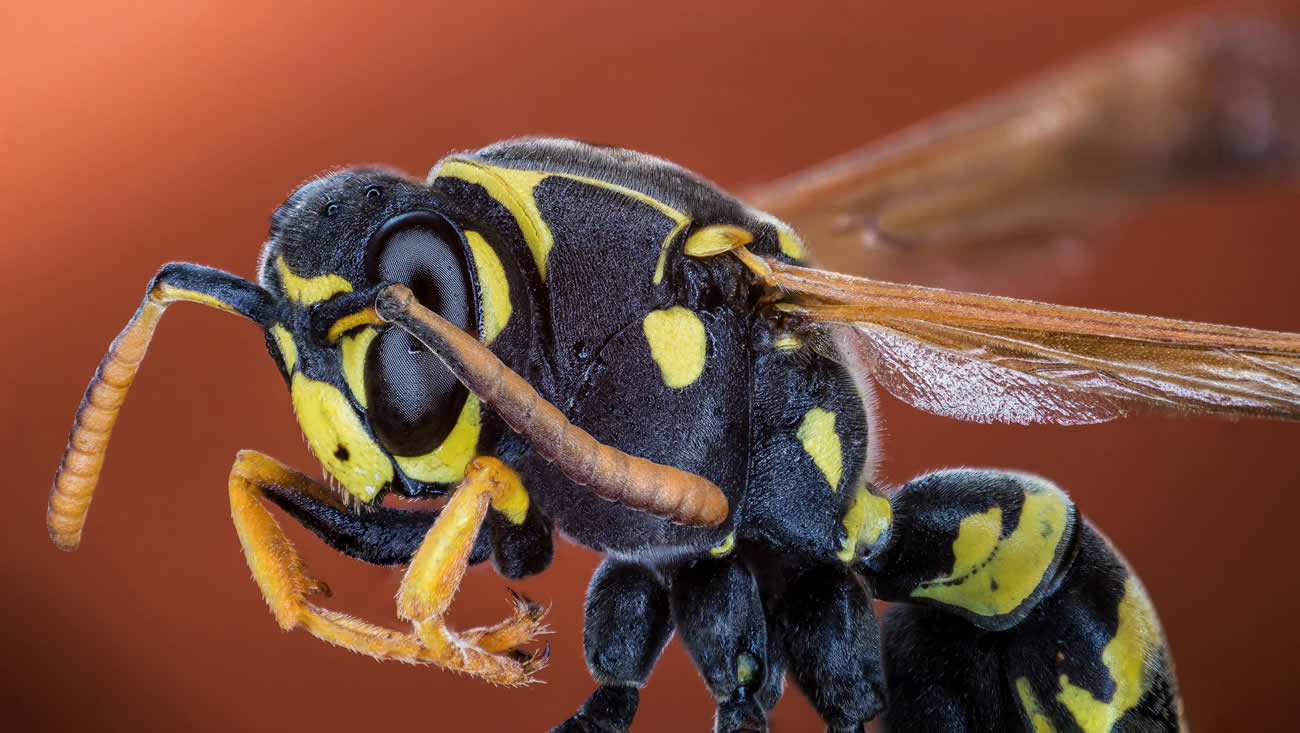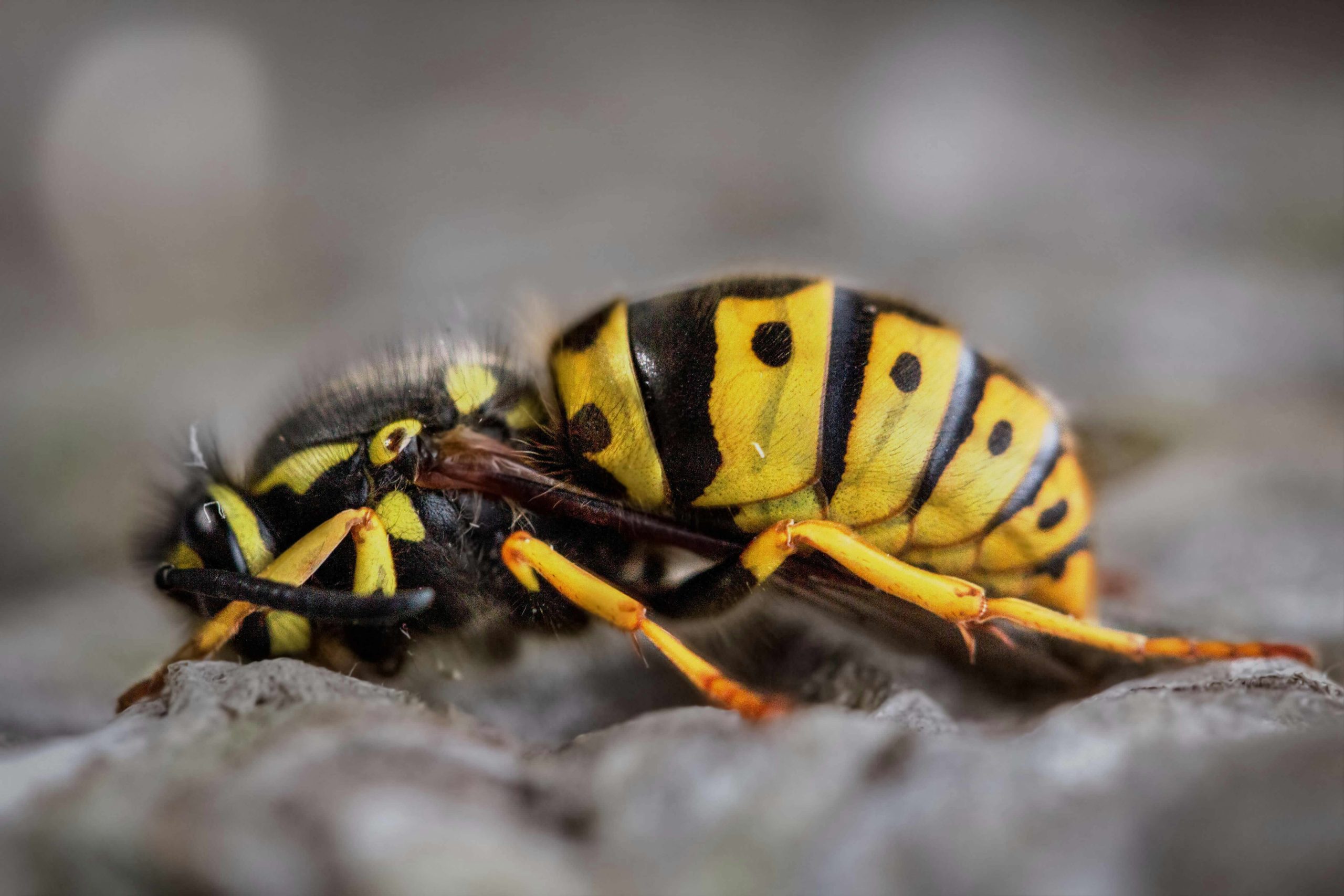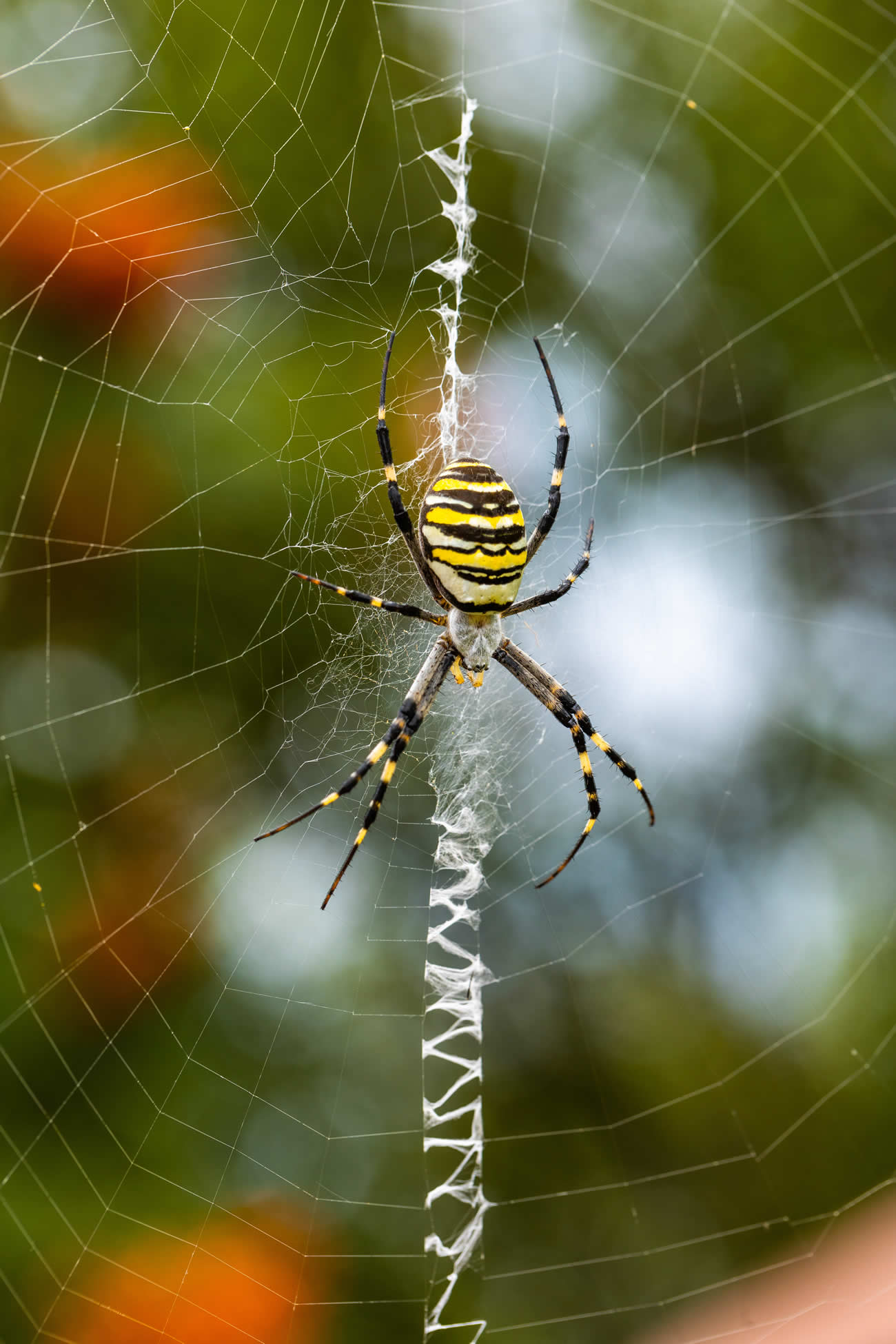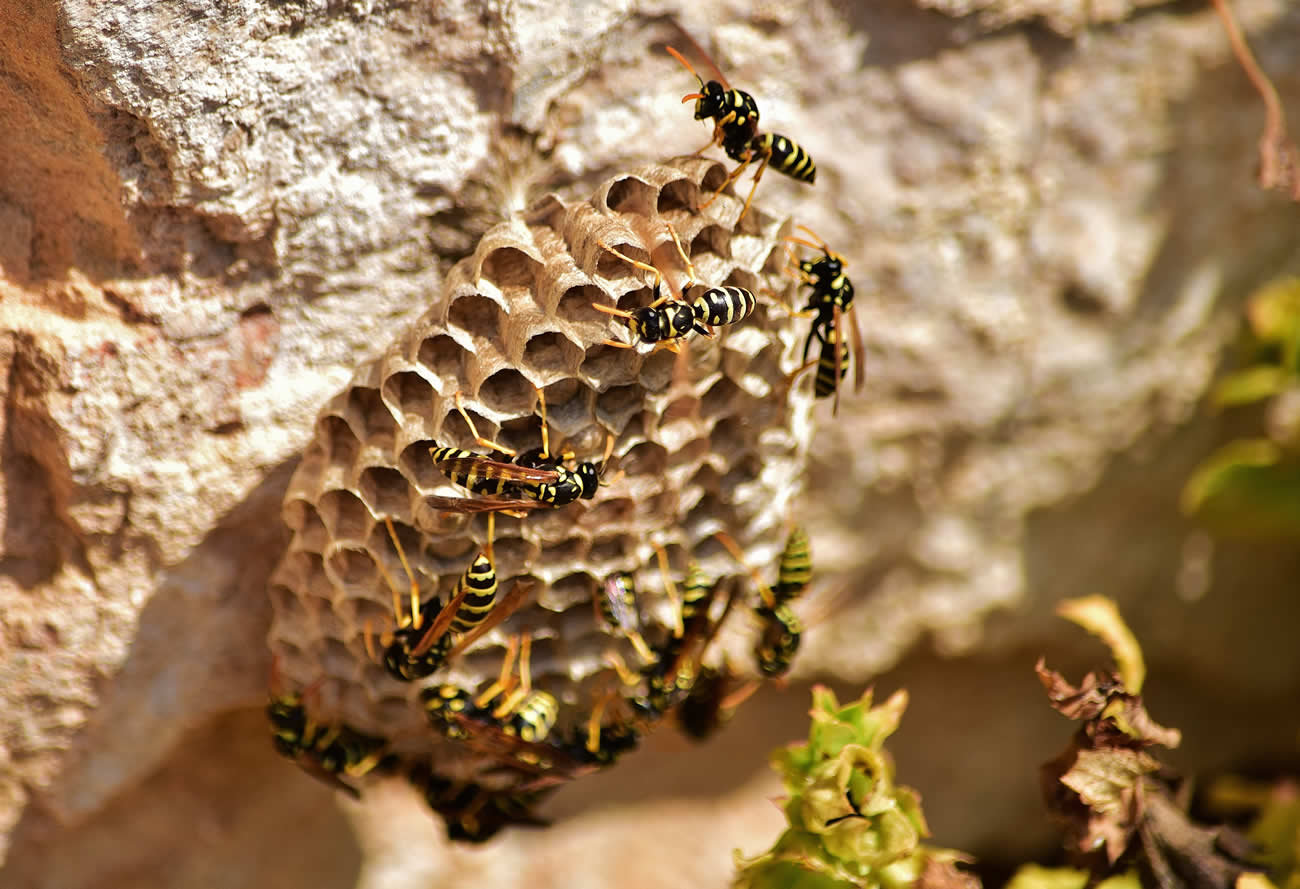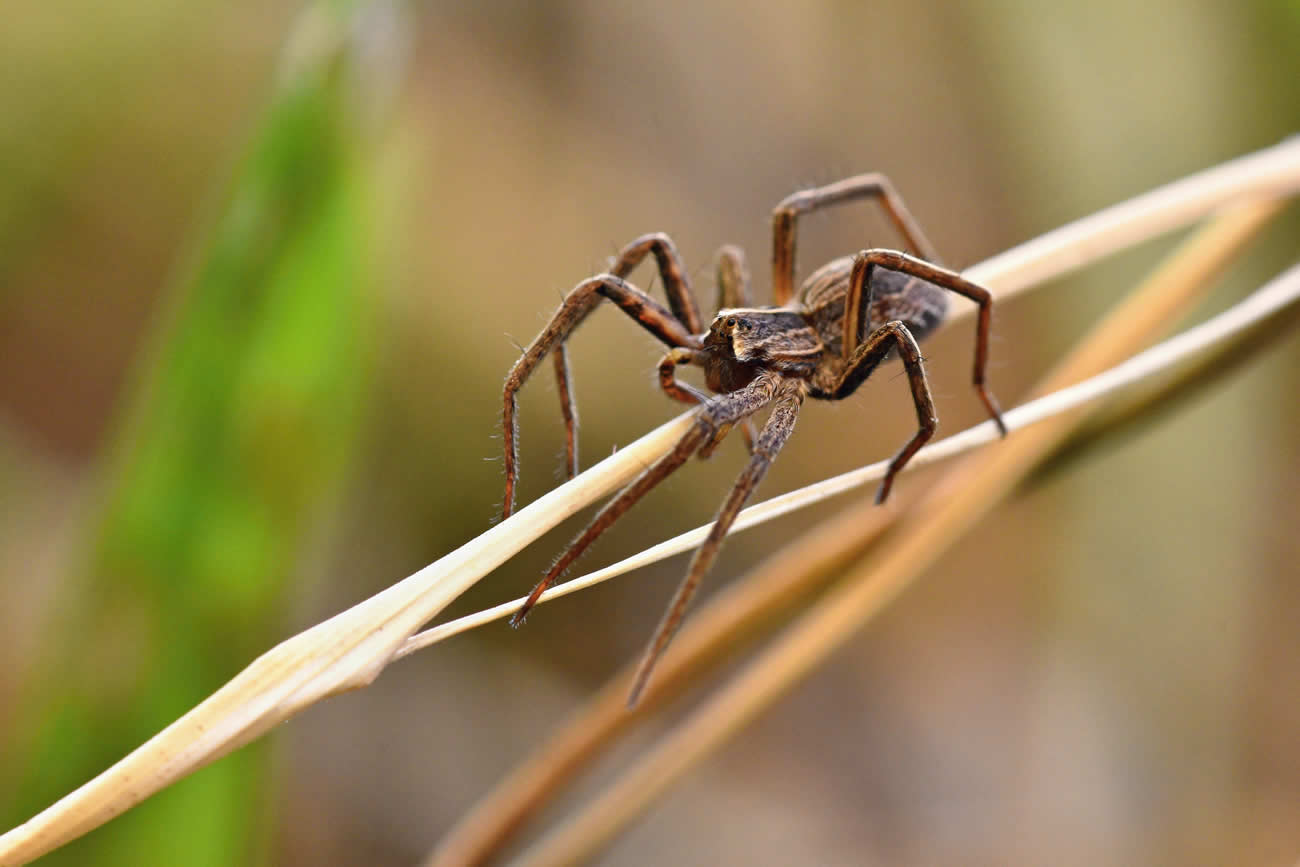Unlike bees, which die after a single sting, wasps possess a remarkable ability to sting multiple times without losing their stinger. This makes them particularly dangerous, especially considering that a single wasp nest can house more than 100,000 wasps.
When it comes to wasp sting treatment, understanding their attack patterns is crucial. These insects can release chemical signals that summon other wasps to attack, potentially leading to multiple stings in quick succession. Additionally, the pain from their stings, which rates 2.0 on the Schmidt Pain Index, typically lasts from a few minutes to an hour, though swelling may continue for several hours.
In this comprehensive guide, we will explore the fascinating mechanics behind wasps’ stinging abilities, compare different wasp species, and examine scientific research on their venom potency. Whether you’ve been stung before or simply want to be prepared, this information will help you understand and deal with wasp stings effectively.
Table of Contents
ToggleUnderstanding Wasp Stinger Anatomy
The wasp stinger, a modified ovipositor found in female wasps, consists of three main components: the stylet, lancet, and tip. This intricate structure enables wasps to deliver precise stings whilst maintaining control over venom injection.
Smooth vs Barbed Stinger Structure
The wasp’s stinger presents a distinctive smooth structure, fundamentally different from a bee’s barbed design. This smooth configuration allows wasps to withdraw their stinger effortlessly after an attack. The stinger features a sharp, narrow tubular structure similar to a hypodermic needle, complete with an outer sheath resembling a cannula.
The stinger’s anatomy includes three longitudinal regions: basal, medial, and apical. The medial region maintains a constant diameter, whilst the apical region tapers towards the tip, creating an efficient penetration mechanism. This tapered geometry requires minimal puncturing force, preventing mechanical failure during use.
Venom Sac Mechanism
At the base of the stinger lies a sophisticated venom delivery system. The venom sac, situated in the wasp’s lower abdomen, connects directly to the stinger’s bulb. A cylindrical venom canal runs through the stinger’s centre, channelling venom from the sac to a natural orifice near the tip.
The venom itself comprises a complex mixture of compounds, including proteins, peptides, and enzymes. Specifically, it contains mastoparan, eumenitin, hyaluronidase, phospholipase A2, and various small molecules. Moreover, the venom includes amines such as histamine, tyramine, and serotonin, alongside pain-causing kinins.
Muscle Control System
The stinger’s operation relies on an intricate muscle control system. Three paired plates, controlled by specific muscles, facilitate the pumping and insertion mechanism. These plates drive the lancets, which slide freely along rails within the stylet. The relative sliding motion of these components creates a gap near the tip, through which venom flows.
The stinger also incorporates sophisticated sensory structures. Approximately 30-35 campaniform sensilla (CS) distribute along the dorsal valve’s distal half. These sensilla function as mechanoreceptors, each containing a single mechanosensory dendrite. Furthermore, dome-shaped (DS) sensilla appear along both dorsal and ventral valves, increasing in density towards the apex. These DS sensilla serve dual purposes, providing both mechanoreceptive and chemoreceptive functions through their unique structure, which includes an apical pore and multiple sensory neurons.
How Many Times Can Wasps Sting Before It Dies
Social wasps possess an extraordinary defensive mechanism that sets them apart from other stinging insects. A well-fed wasp in prime condition delivers several full-strength stings until its venom glands become depleted.
Multiple Sting Capability
The severity of wasp attacks correlates directly with the number of stings inflicted. Whilst a single sting typically results in mild local reactions, multiple stings can trigger severe systemic complications. Research indicates that more than 29 stings significantly increase mortality risk.
Between 2011 and 2021, wasp, hornet, and bee stings caused 788 deaths, averaging 72 fatalities annually. Consequently, males accounted for 84% of these casualties, primarily due to occupational exposure in roles such as beekeeping, electrical facility maintenance, and farming.
When threatened, wasps emit warning signals or release specific pheromones that summon other colony members to attack. This collective defence mechanism makes them particularly formidable, as each wasp can deliver multiple stings in quick succession.
Venom Regeneration Process
The venom production system operates through specialised glands that manufacture and store this potent chemical mixture. After depleting their venom supply through multiple stings, wasps require time to replenish their reserves.
The venom contains several active components:
- Proteins and peptides (mastoparan, eumenitin)
- Enzymes (hyaluronidase, phospholipase A2)
- Active amines (serotonin, histamine)
- Wasp kinins
The potency of each sting varies based on the wasp’s agitation level. A defensive ‘warning sting’ typically delivers minimal venom, allowing the wasp to conserve its resources for multiple encounters. However, in situations where the wasp perceives a significant threat, it administers a full venom dose whilst maintaining a firm grip with its mandibles.
Social wasps primarily employ their venom as a defensive measure to protect their colonies, contrasting with solitary wasps that use it for prey capture. The venom’s composition enables various biological activities, including antimicrobial, anticoagulant, and anti-inflammatory properties.
Comparing Different Wasp Species’ Sting Abilities
Each wasp species exhibits distinct stinging behaviours and attack patterns, making their defensive mechanisms uniquely dangerous. Among various species, the venom potency varies substantially, with some delivering more painful stings whilst others inject higher volumes of venom.
Paper Wasp Sting Frequency
Paper wasps demonstrate precise targeting abilities, often aiming for the face during encounters. Although they attack in smaller groups, their stings pack considerable force despite using less venom. These wasps maintain exceptional manoeuvrability, capable of stinging in multiple directions whilst defending their territory.
Yellow Jacket Attack Patterns
Yellow jackets stand out as notably aggressive defenders, particularly when their underground nests face disturbance. A single colony can house between 1,000 to 3,000 workers, creating potential for mass attacks. These wasps employ sophisticated defensive strategies:
- Release chemical pheromones upon being crushed, triggering colony-wide attacks
- Pursue perceived threats over extended distances
- Display heightened aggression during autumn months
The German yellowjacket, first appearing in Ohio in 1975, exhibits particularly bold behaviour, actively marking and pursuing aggressors.
Hornet Sting Capabilities
Hornets, despite their intimidating size, typically show less aggressive tendencies than other wasp species. Nevertheless, their stinging capacity proves formidable. A single hornet can deliver multiple stings, with colonies capable of inflicting tens or hundreds of stings simultaneously.
The venom potency varies significantly among hornet species. Research indicates that Vespa luctuosa possesses the most lethal known wasp venom, with an LD50 value of 1.6 mg/kg. Furthermore, Vespa mandarinia demonstrates remarkable venom capacity, with a single sting delivering enough venom to affect 270g of mouse tissue.
Interestingly, whilst hornets deliver more painful stings owing to their larger size and higher venom volume, they generally remain shy unless provoked. The Asian hornet, although no more dangerous than the European species, inflicts more painful stings due to its larger stinger size.
Scientific Research on Wasp Venom Potency
Scientific research reveals wasp venom as a complex mixture of biologically active components, offering insights into its potency and effects on human physiology.
Venom Composition Analysis
Wasp venom contains three primary components: proteins, peptides, and biogenic amines. The protein content includes hyaluronidase A, phospholipase A1, and antigen 5 protein, whilst peptides encompass mastoparan and various enzymes. Indeed, research indicates that certain wasp species, namely Vespa bicolor, possess unique venom compositions that exhibit antimicrobial properties against both gramme-positive and gramme-negative bacteria.
The venom’s chemical structure comprises approximately 93 protein spots, of which 51 have been identified and classified into three distinct groups: typical venom components, structural proteins, and housekeeping proteins. Remarkably, 32 of these proteins demonstrate reactivity with IgE from wasp-allergic patients.
Pain Index Studies
The Schmidt Pain Index, developed through extensive research, rates wasp stings on a scale from 1 to 4, with 4 representing extreme, debilitating pain. According to this scale, social wasp species typically score higher, averaging 1.85 ± 0.71, compared to solitary species at 1.46 ± 0.94.
The warrior wasp (Synoeca septentrionalis) ranks among the most painful, earning a level 4 rating alongside the bullet ant and tarantula hawk wasp. Interestingly, field observations suggest that social species generally inflict more painful stings than their solitary counterparts.
Impact of Multiple Stings
Multiple stings present significant health risks, with research showing that more than 20 stings may prove fatal. The venom’s effects escalate through various mechanisms:
- Direct toxic impact on organs
- Inflammatory responses leading to potential anaphylaxis
- Systemic complications affecting multiple body systems
Clinical studies demonstrate that 21% to 58.5% of patients requiring hospitalisation following wasp stings develop acute kidney injury. Furthermore, the venom’s phospholipase and hyaluronidase components disrupt cell membranes, potentially causing widespread tissue damage. Most notably, mortality rates increase proportionally with the number of stings received.
Our Final Say!
Wasps stand apart from other stinging insects through their remarkable ability to deliver multiple stings without losing their stinger. Their sophisticated anatomy, featuring a smooth stinger structure and complex venom delivery system, allows them to strike repeatedly while maintaining precise control over venom injection.
Scientific research demonstrates significant variations among wasp species, particularly regarding their defensive behaviours and venom potency. Yellow jackets prove especially dangerous due to their aggressive nature and large colony sizes, while hornets, despite their intimidating appearance, generally show less hostile tendencies unless provoked.
The Schmidt Pain Index places wasp stings at varying levels of severity, with social species typically inflicting more painful stings than solitary ones. Most notably, clinical studies reveal that multiple stings pose serious health risks, potentially causing organ damage, acute kidney injury, and systemic complications.
Understanding wasp behaviour and venom mechanisms proves essential for both medical professionals and the general public. This knowledge helps develop better treatment protocols and prevention strategies, ultimately reducing the risk of dangerous encounters with these fascinating yet potentially hazardous insects.

